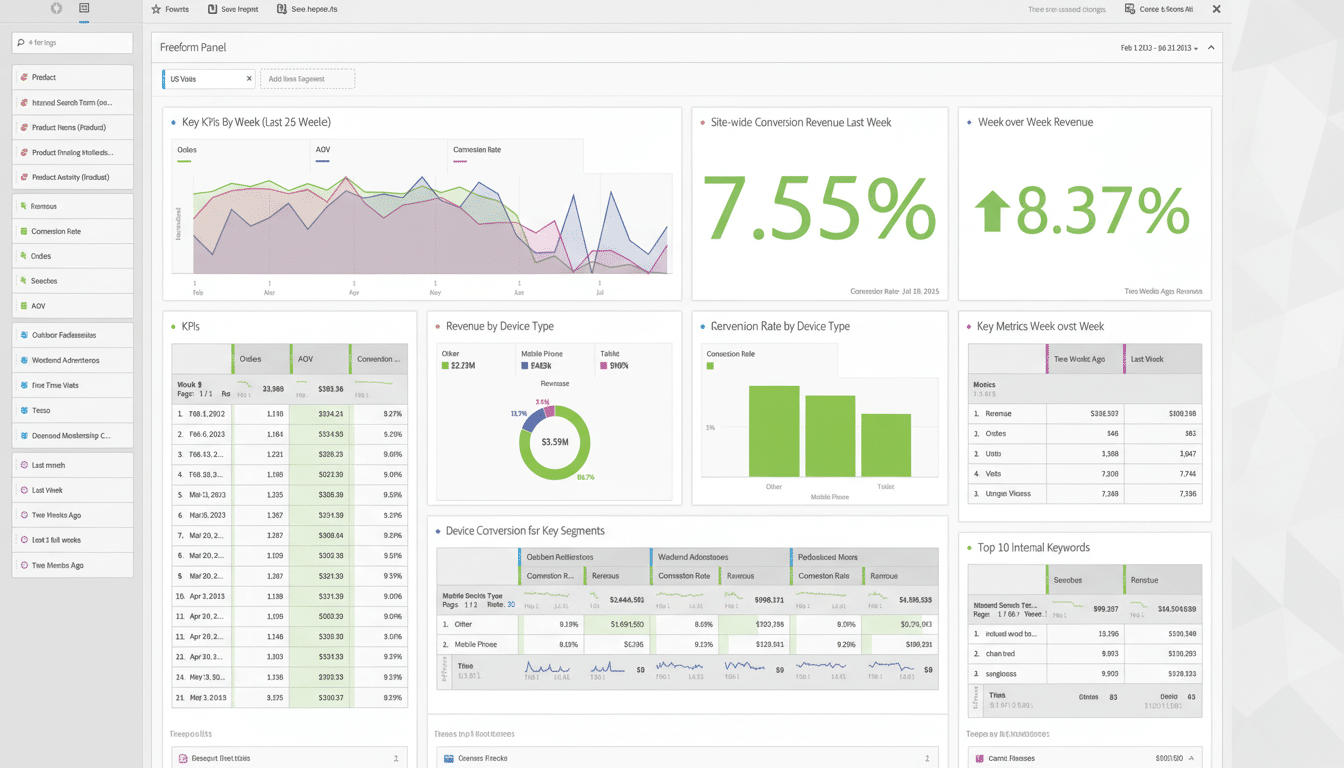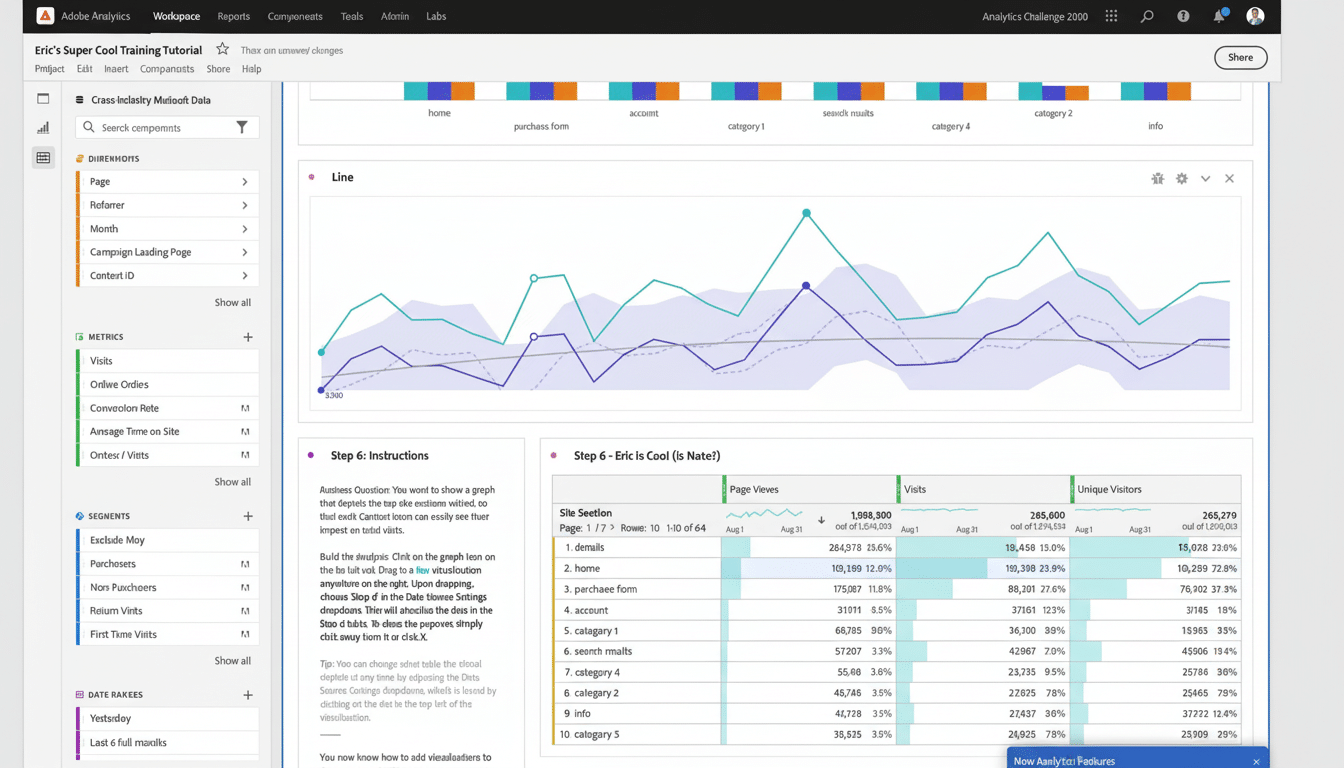Adobe anticipates a sharp increase in AI-mediated shopping during the U.S. holiday season, predicting that traffic from generative tools that enable consumers to research, compare, and select gifts will be up 520% year over year. The rush is accompanied by roughly $253.4 billion in online sales, an increase of 5.3% compared with the previous season, according to new forecasts from Adobe Analytics.
Cyber Monday is still the largest single day, with forecasts slated to hit $14.2 billion in online spend, while Black Friday will reach as high as $11.7 billion and Thanksgiving Day at $6.4 billion.

Adobe’s outlook is grounded in an aggregation of 1 trillion-plus U.S. retail site visits and more than 100 million SKUs covering 18 categories, providing one of the most comprehensive road maps to digital behavior available.
AI-assisted holiday shopping activity surges ahead
According to Adobe, AI-fueled activity will peak in the 10 days before Thanksgiving — during which consumers will be on the hunt for gift ideas and compare models to verify pricing. The company defines AI-assisted shopping as queries and sessions that are started or influenced by generative interfaces — imagine retail chat assistants, search copilots, and product discovery tools that answer natural-language questions or generate personalized lists.
The forecast comes on the heels of a blockbuster prior season, when AI traffic to retail sites surged more than 1,300% from a small base. What is different now is scale and sophistication: retailers have graduated from chatbot pilots to more seamless integrations that tie generative interfaces directly to real-time inventory, reviews, or promotions. That connection is important — AI that understands which sizes are in stock or what the bundles actually cost removes friction and earns trust.
How Shoppers Are Using Generative AI Tools Online
In a survey of 5,000 U.S. consumers conducted by Adobe, 53 percent said they would consider turning to AI for research before clicking “buy,” followed by 40 percent who said it would help with recommendations, 36 percent in cornering deals, and 30 percent in finding the right gift. Then expect the most significant AI usage in toys, electronics and entertainment gadgets, jewelry, and beauty and personal care — all categories that require side-by-side guidance as consumers weigh specs, styles, and price.
Real-world examples are simple: “Show me the top noise-canceling headphones under $200,” “Construct three gift ideas for a 10-year-old who loves STEM,” or “Which moisturizers are hypoallergenic and on sale today?” The upside for retailers is straightforward — “people with a shortlist make quicker decisions and return fewer things,” Kolb said. The risk is just as obvious — some hallucinated feature or a stale price point can torpedo confidence in a single session.
Mobile and BNPL are reshaping the online checkout
Mobile will take an all-time high 56.1% share of online spend for the season, up from a little more than half in recent years. Widescreen phones and quicker app experiences mean the type of deep research that was once reserved for desktop feels more at home on handsets, and that aligns with the always-on rhythm of AI-powered discovery.

Buy now, pay later marches on into the mainstream. Adobe is forecasting that BNPL will result in $20.2 billion in online spending for the season, and it expects Cyber Monday alone to hit over $1.04 billion. For expensive electronics and furniture, the chance to pay in installments can be the deciding nudge, especially when AI tools find bundles and warranties that help keep the final price within budget.
Deals, discounts and standout categories this season
This season’s gravitational force will be discounts. Adobe expects the typical peak markdown to be 28 percent off list price, a discount that may lead more shoppers to rely on AI for help identifying changing deals and confirming whether that deal was really the lowest seen in weeks.
Electronics are expected to lead with $57.5 billion in spending, followed by apparel at $47.6 billion and furniture at $31.1 billion. Social ads will be another factor to consider, with Adobe calculating 51% year-over-year growth in online earnings from social placements — an increase where AI-rendered creative and dynamic product feeds can have a big impact on relevance.
What retailers can do to prepare for AI-driven demand
The AI moment rewards retailers who treat generative interfaces as a front door, and not just a gimmick. It begins with structured product data, pristine metadata, and accurate pricing and availability in real time — the basics AI agents can ingest securely. Merchants should publish their own clear gift guides, comparison content, and buying frameworks that copilots can quote — owned content that relieves hallucinations and keeps shoppers on-brand.
On the experience side, “add to cart” reflects an AI recommendation of the exact SKU, size, and price discussed — AI recommendations that are integrated with cart logic, promotions, and loyalty. Slap on guardrails and disclosures, and monitor answer quality just like with site search. The measurement should also evolve: track sessions that originate with AI assistance — compare conversion and return rates; account for lift when a copilot or chat assistant is part of the path to purchase.
Adobe’s forecast points to a larger trend that retail analysts and consultancies have been talking about: generative tools are collapsing the discovery funnel. The winners this season will be the brands that provide those tools with high-quality data, respect the deal-driven mindset and execution, and make pulling the trigger from inspiration to checkout a seamless experience.

